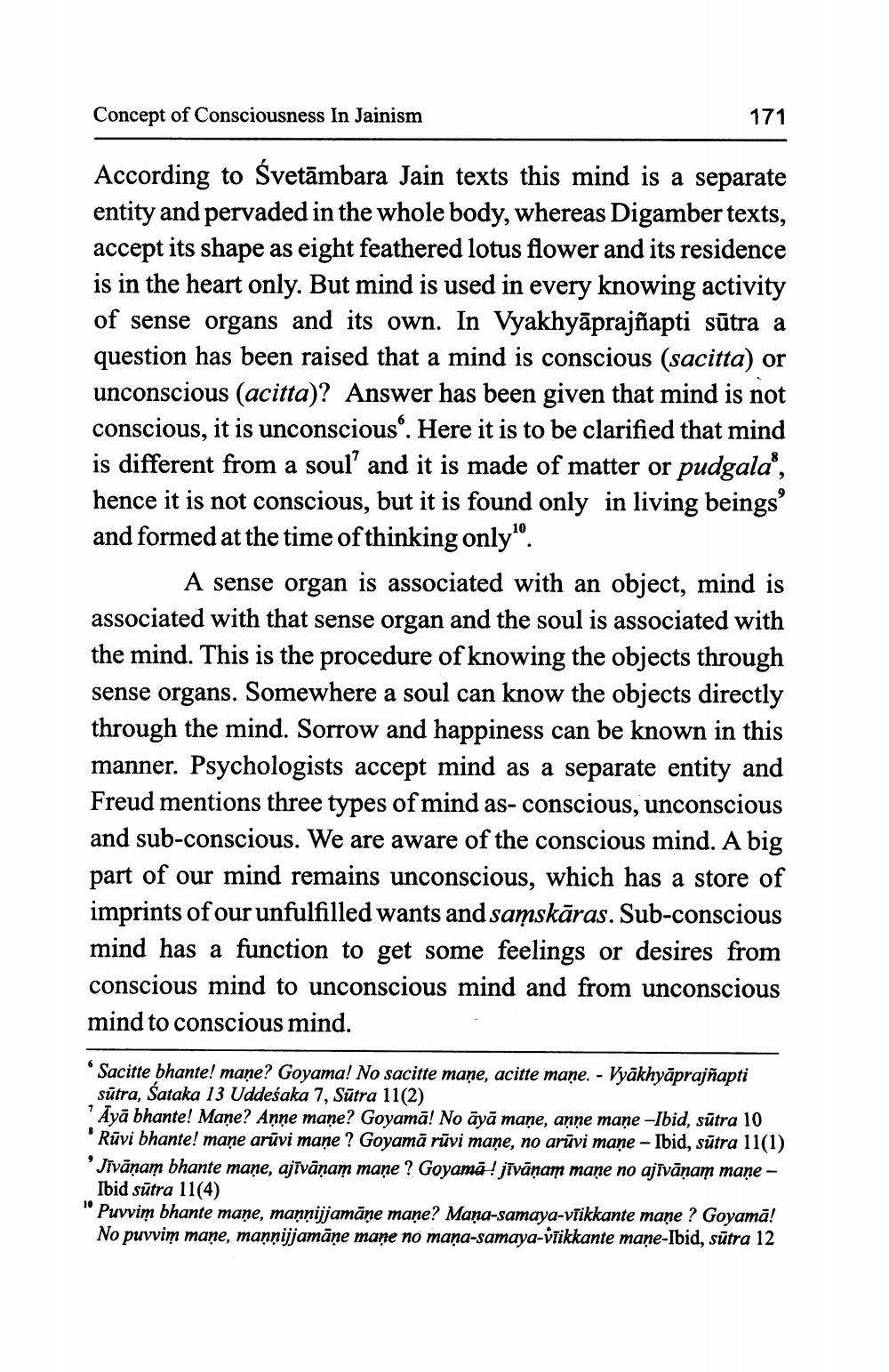________________
Concept of Consciousness In Jainism
171
According to Svetāmbara Jain texts this mind is a separate entity and pervaded in the whole body, whereas Digamber texts, accept its shape as eight feathered lotus flower and its residence is in the heart only. But mind is used in every knowing activity of sense organs and its own. In Vyakhyāprajñapti sūtra a question has been raised that a mind is conscious (sacitta) or unconscious (acitta)? Answer has been given that mind is not conscious, it is unconscious'. Here it is to be clarified that mind is different from a soul and it is made of matter or pudgala", hence it is not conscious, but it is found only in living beings' and formed at the time of thinking only.
A sense organ is associated with an object, mind is associated with that sense organ and the soul is associated with the mind. This is the procedure of knowing the objects through sense organs. Somewhere a soul can know the objects directly through the mind. Sorrow and happiness can be known in this manner. Psychologists accept mind as a separate entity and Freud mentions three types of mind as-conscious, unconscious and sub-conscious. We are aware of the conscious mind. A big part of our mind remains unconscious, which has a store of imprints of our unfulfilled wants and samskāras. Sub-conscious mind has a function to get some feelings or desires from conscious mind to unconscious mind and from unconscious mind to conscious mind.
Sacitte bhante! mane? Goyama! No sacitte maņe, acitte mane. - Vyākhyāprajñapti sūtra, Šataka 13 Uddeśaka 7, Sūtra 11(2) Aya bhante! Mane? Anne mane? Goyamā! No āyā mane, anne mane -Ibid, sūtra 10 Rūvi bhante! mane arūvi mane? Goyamā rūvi mane, no arūvi mane - Ibid, sūtra 11(1) Jīvānam bhante mane, ajīvānam maņe? Goyamā! jīvānam maņe no ajīvānam mane - Ibid sūtra 11(4) Puvvim bhante mane, mannijjamāne mane? Mana-samaya-vīikkante mane? Goyamā! No puvvim mane, mannijjamāṇe mane no maņa-samaya-viikkante maņe-Ibid, sūtra 12




